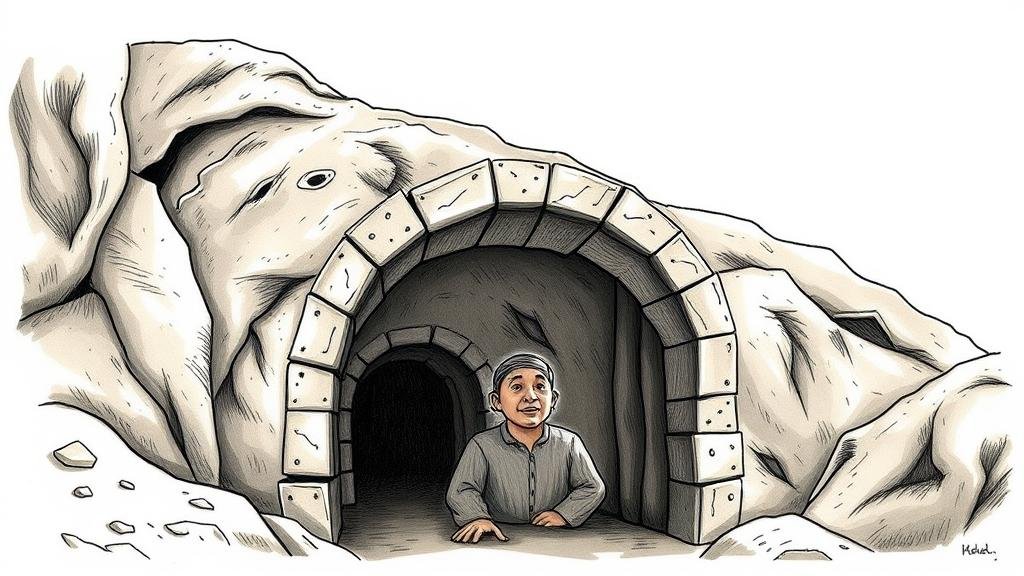Tracing the origins of ceremonial artifacts found in unexplored tunnels.
Tracing the Origins of Ceremonial Artifacts Found in Unexplored Tunnels
The discovery of ceremonial artifacts in unexplored tunnels has sparked significant interest among archaeologists and historians. These artifacts often provide valuable insights into ancient cultures, their beliefs, and their social structures. Understanding their origins is crucial for reconstructing historical narratives. This article delves into the origins of these artifacts, examining notable discoveries and their implications for our understanding of human history.
The Significance of Ceremonial Artifacts
Ceremonial artifacts are objects created for religious or ceremonial purposes, often imbued with symbolic meaning. They can include items such as:
- Statues and idols
- Ritual tools
- Decorative items used in ceremonies
The study of these artifacts helps historians understand the rituals, hierarchies, and cultural practices of ancient civilizations. For example, the intricate carvings found on ceremonial masks in the Andes provide insight into the spiritual beliefs of the Inca civilization, showcasing their connection to the divine.
Notable Discoveries in Unexplored Tunnels
Several significant discoveries of ceremonial artifacts in unexplored tunnels have emerged in recent years. One notable example occurred in 2021 when a team of archaeologists uncovered a series of tunnels beneath the ancient city of Teotihuacan in Mexico.
This excavation revealed:
- Over 100 ceremonial items, including obsidian blades and decorative urns.
- Murals illustrating the citys mythology and cosmology.
The artifacts provided new insights into the societal structure of Teotihuacan, which is believed to have been one of the most influential cities in Mesoamerica from approximately 100 BCE to 750 CE. The artifacts styles indicated strong trade links with other regions, reflecting a complex network of cultural and economic exchange.
Methods of Dating Artifacts
To accurately trace the origins of these ceremonial artifacts, researchers utilize various dating methods. Common techniques include:
- Carbon-14 Dating: This method measures the decay of carbon isotopes in organic materials, providing ages for items like wooden artifacts.
- Thermoluminescence (TL) Dating: TL dating is used for ceramic items and measures the last time the material was heated to a high temperature.
For example, ceramic figurines found in the tunnels of Teotihuacan were dated to around 200 CE, confirming their use during the citys height.
Real-World Applications and Implications
The findings from unexplored tunnels and the ceremonial artifacts help shape our understanding of historical populations and their interactions. By analyzing the data, researchers can establish connections between different cultures, enhancing our comprehension of global history. Also, such discoveries can aid in preserving endangered heritage sites, emphasizing the importance of archaeological research in contemporary society.
For example, excavations in the catacombs beneath Paris uncovered numerous artifacts that highlight the citys evolution from a small Roman settlement to a major cultural center. Insights drawn from these findings can inform urban planning and cultural preservation efforts within modern cities.
Challenges in Artifact Preservation
While unveiling these fascinating artifacts, archaeologists face significant challenges in preservation. Factors such as:
- Environmental conditions
- Human interference
pose threats to these delicate findings. The preservation of artifacts is crucial not only for historical accuracy but also for educational purposes. Ensuring that future generations can study and appreciate these items requires stringent conservation methods.
Conclusion
The exploration of tunnels and the subsequent discoveries of ceremonial artifacts continue to reveal the complex tapestry of human history. significance of these artifacts goes beyond their physical form; they represent the beliefs, rituals, and social structures of ancient peoples. As archaeological techniques continue to evolve, our understanding of these remnants of the past will surely deepen.
Ultimately, engaging with these findings enhances our collective knowledge of civilization and emphasizes the importance of preserving our historical heritage for future generations.



